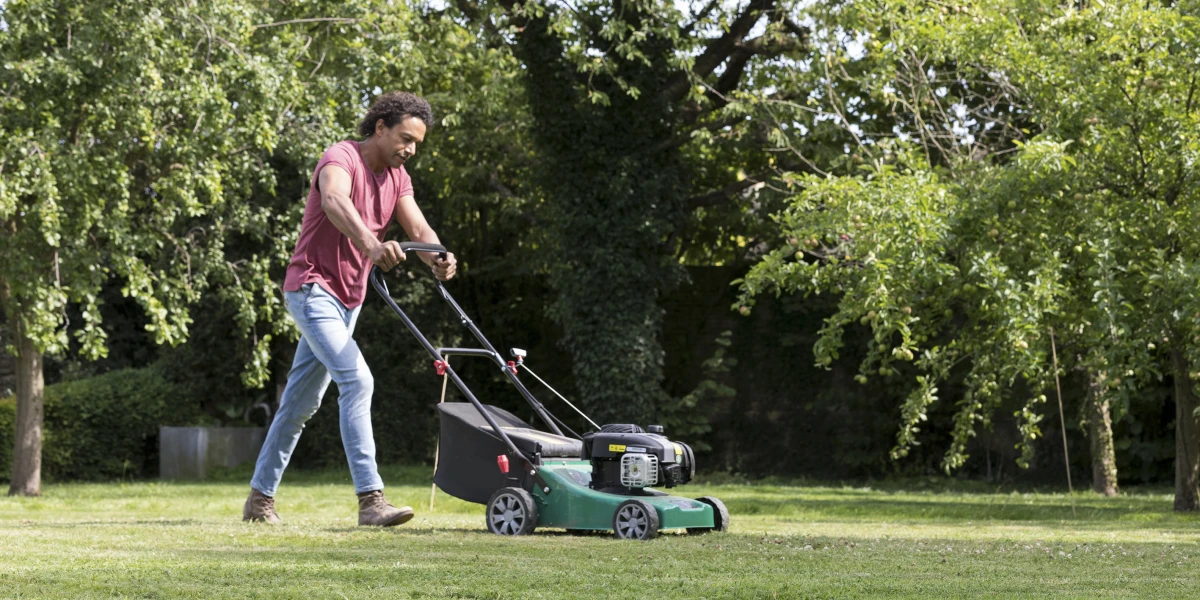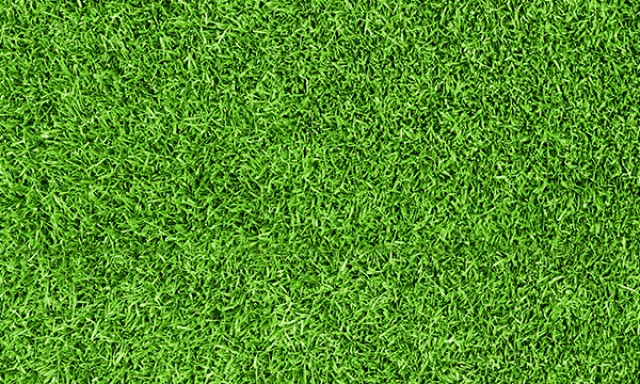Lawns in Spring
In spring lawns begin actively growing again after being dormant through the cool winter months. It is one of the best times of year (along with autumn) to feed your lawn, kill the moss and weeds and begin regular mowing, so that your lawn is in top shape for summer entertaining.
There are two ways you can go about it. You can use a one product does it all type solution, which is ideal for busy people or people in need or a quick and easy solution, or you can go down a more tailored route. The tailored option means multiple products and steps along the way to get a lawn that's healthy and thriving. This option is great for people with a passion for a good looking lawn, or if your lawn is in a bad way and needs a bit of TLC to get it looking lush again.
A one product does it all solution for busy people
LawnPro Turfclean & Green Rapid is the product for you if you need a quick and easy solution. It easily clips onto a garden hose, allowing you to evenly spray the product onto your lawn and then leave it to do it's thing. Turfclean & Green Rapid is a 3-in-1 product that kills weeds, fertilises your lawn for healthy growth and unlike other products on the market breaks down thatch naturally, helping to prevent disease and pests, while adding valuable microbes to your soil. It's easy to use, gets great results and is safe for children and pets as soon as it dries. You may also choose to team this product up with other lawn care advice listed below like working on your drainage and over seeding your lawn to thicken it. It's also important to maintain a strong mowing and watering programme, particularly as the weather heats up and your lawn gets put under more strain.
A more bespoke approach to lawn care
Fertilising
All lawns need fertiliser to maintain healthy growth. Like vegetable patches and hedges where nutrients are removed through harvesting or trimming, lawns are regularly mowed and clippings removed* from the lawn, along with the nutrients they contain. These need to be replaced.
In mid-spring and early Autumn, apply LawnPro Natural Boost or LawnPro Green & Grow. These lawn ferilisers will help boost growth, improve lawn health and sweeten the soil which helps to discourage weed growth. Another option is to treat your lawn with LawnPro Lawn Thickener. This will increase lawn vigour and help prevent moss and weeds.
Moss & Fungus Control
Moss is a problem in damp, poorly drained, acidic lawns. Spring is a good time to control moss problems. Applying LawnPro Lawn Thickener will raise the soil pH (lower acidity) as well as encouraging the lawn grass. Apply LawnPro Mossclear to kill the moss and the moss spores.
Lawn Fungus like Dollar Spot, Brown Patch, Fusarium and Red Thread are also common lawn problems that can occur when soil pH is off, lawns aren't draining properly and there is a build up of thatch. Treating your lawn with LawnPro Fungus Control will help get rid of disease, while LawnPro Lawn Thickener will help fix soil pH and fill in any gaps. If your lawn also has a dense thatch problem then using LawnPro D-thatch as per the advice below will help prevent the issue from reoccuring.
Weeding
Healthy thick swards of lawn grass are resistant to disease and out-compete weeds, reducing the need for applications of herbicide. Also, herbicides work best on growing lawns which have adequate nutrients.
- LawnPro Turfclean Ultra and LawnPro All-in-1 have been formulated for the control of the widest range of broadleaf weeds in New Zealand lawns. The combination of 3 active ingredients is balanced to ensure the most common weeds in New Zealand lawns are controlled with no risk of burning the fine lawn grasses grown as lawns in New Zealand.
- It is good weed control practice to use LawnPro Turfclean or LawnPro Turfclean Ultra as routine and alternate it with LawnPro Prickle and Hydrocotyle every 3rd or 4th treatment.
- For lawns prone to Onehunga prickle weed apply LawnPro Prickle and Hydrocotyle or LawnPro Turfclean Ultra before the weed flowers and produces its prickly seeds.
- Coarse grasses in lawns can be controlled by painting the central crowns of the unwanted grass with Weed Weapon Invade Gel.
De-Thatching
Thatch is the dense spongy layer at the base of your lawn made up of tightly interwoven or compacted stems, leaves and roots. Lawns with high levels of thatch (2 cm or more) can create an environment in which disease and insect pests thrive. Poor drainage compacted soil and unfavourable pH can contribute to high levels of thatch.
- Apply LawnPro D-Thatch, or LawnPro Turfclean & Green Rapid+ to the affected areas of the lawn. This naturally encourages the breakdown of excessive thatch by beneficial soil organisms and restores the balance of breakdown to build-up.
- Alternatively manually remove the excessive thatch by raking out the dead material with a grass rake, de-thatcher rake or mechanical scarifier.
- Then apply LawnPro Lawn Thickener to promote strong grass growth and to fill in areas where grass has been stunted.
Drainage
Fork wet areas of lawn - Through winter the lawn soil may have become compacted. Poor drainage in lawns may cause puddles to form in wet weather. If puddles are there for more than a day they can ‘drown’ lawn grasses. Try forking over the whole area at locations 20-30 cm apart push the fork at least 20 cm deep and gently ease the handle back slowly to open the soil allowing water to pass through and air to penetrate the soil.
An alternative is to use a lawn plug remover (hollow tine aerator) which takes small plugs of soil out leaving holes to allow drainage of water and penetration of air. The plugs can be left on the lawn to re-incorporate naturally.
Mowing
Mowing is the most obvious, and important, task over spring and summer. Mowing regularly keeps the lawn in good health.
Don’t mow your lawn too short. When lawn grass is mowed too low, the grass no longer needs the same size root system, and the root system is reduced to achieve a balance between the leaves (photosynthesis) and respiration. The lower the cutting height, the shallower the root system becomes. A shallow root system impairs the plant’s ability to withstand drought stress and root pruning from grass grub.
Cutting height influences the ability of the plant to protect itself from the summer heat. The crown (growing points) of the turfgrass are near the soil surface and are insulated by the mature leaves. Reducing the cutting height subjects the crowns to a greater likelihood of high-temperature injury. Consequently, the plant may be stunted or die, and the turf gradually thins out during summer.
For most New Zealand lawns, cut the turf to a height of 4 cm as needed in winter, and to 2-3 cm on a weekly basis during spring and autumn. Mow when the grass has grown by 50%, so you don’t have to cut off more than one-third of the blade.
Over Seeding
After moss or weeds have been removed, or where the grass is growing sparsely, over-seeding may be necessary. Early autumn is the best time for this job, but mid-spring is also suitable.
- Loosen the soil surface with a fork and rake it to leave a fine loose layer of soil on the surface.
- Water the lawn thoroughly so the soil 15 cm deep is damp.
- Sow LawnPro Lawn Thickener over the lawn. Lightly rake to incorporate the seed into the surface.
- Where birds are a problem, net the area or tie plastic supermarket bags to canes in the lawn.
- If the weather remains dry for two or three days water gently with a sprinkler.
- Grass should sprout seven to 10 days after sowing
Watering
Lush green healthy lawns need water for growth. However, the water is taken up by roots and not leaves; wet leaves promote disease and shallow water evaporates off before roots can absorb it. When required water should be applied so that it seeps deep where deep-rooting grasses can reach it and it will not evaporate off.
When required, water lawns thoroughly in the morning so that the leaves dry during the day. A thorough watering once or twice a week is preferable to light watering frequently.
Enjoy your lawn.
*Unless the clippings are always mulched into the lawn. See To Mulch or Not to Mulch? That is the question.


